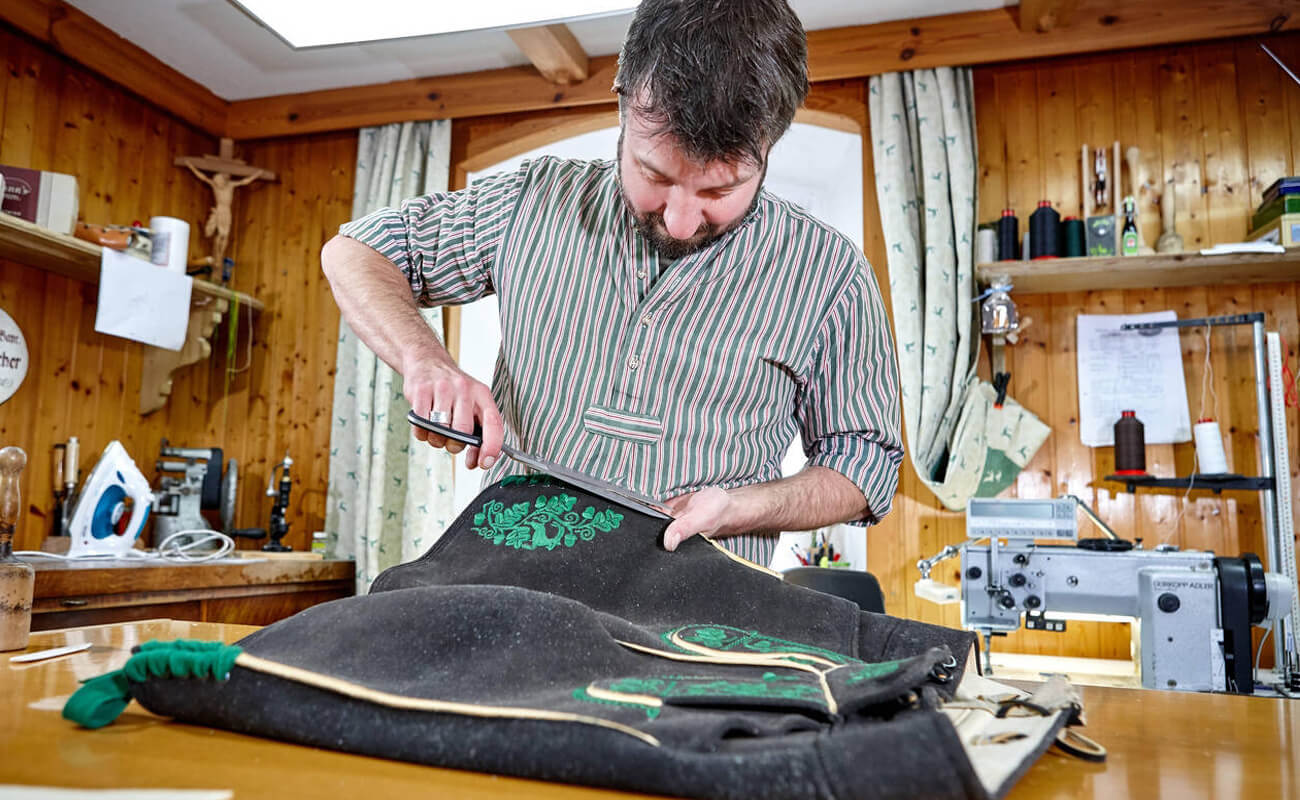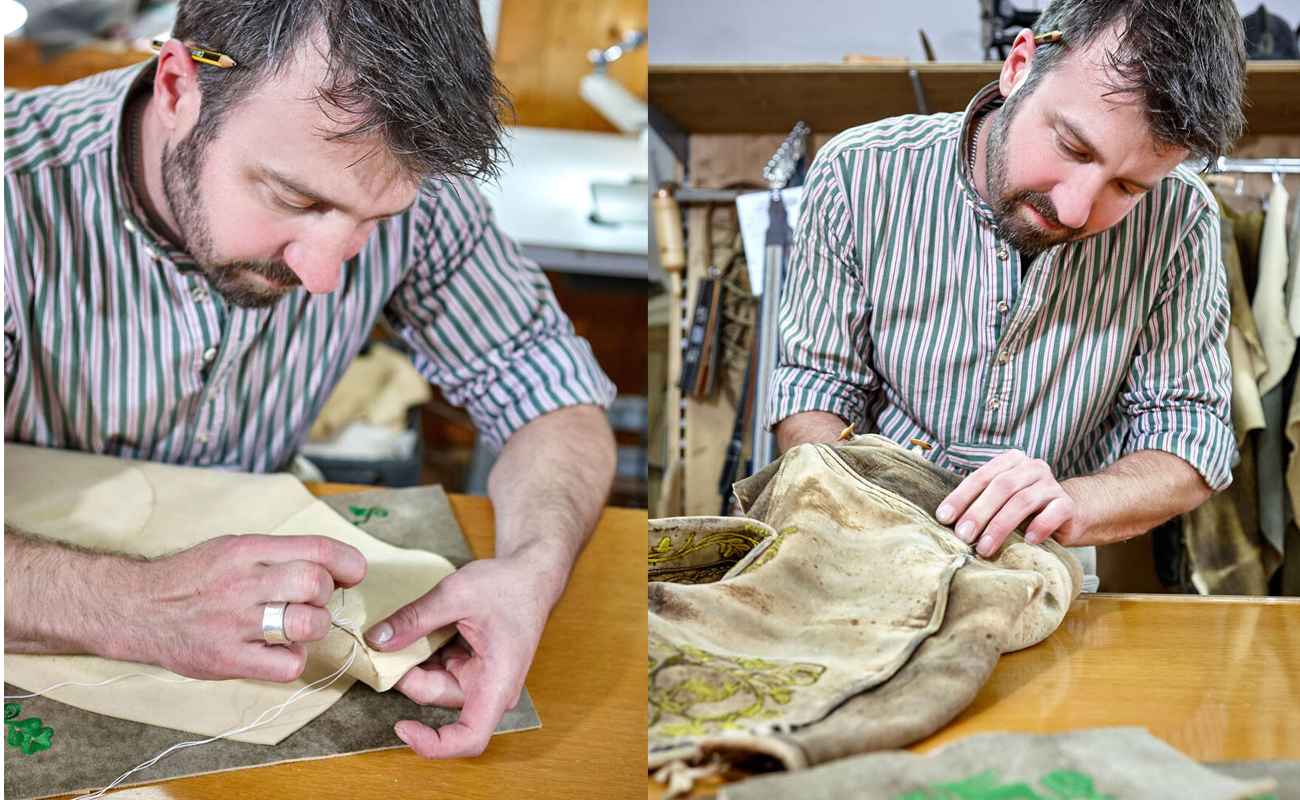How To Make Lederhosen: Complete DIY Lederhosen Making Process for Beginners

Making lederhosen at home might seem difficult, but with the right lederhosen sewing tutorial, anyone can create these traditional German leather shorts. This comprehensive lederhosen step by step guide will show you the complete lederhosen making process using simple materials and basic tools that you can find at any craft store. Whether you’re creating a lederhosen costume DIY for Oktoberfest or want to learn traditional lederhosen making techniques, this homemade lederhosen tutorial covers everything from lederhosen pattern creation to authentic Bavarian lederhosen crafting.

Understanding Lederhosen: History and Types
Before diving into the lederhosen manufacturing process, it’s essential to understand what makes authentic Bavarian lederhosen special. Originally worn by working-class men in Bavaria and Austria during the 18th century, lederhosen were practical garments designed for durability and comfort during physical labor. The leather provided protection from thorns, rough surfaces, and weather while allowing freedom of movement.
Traditional lederhosen making involves different types of leather, each with its own characteristics. The best leather for lederhosen includes deer leather (deerskin), which is considered the premium choice for authentic lederhosen. It’s incredibly soft, durable, and develops a beautiful patina over time. Goat leather is another excellent option that’s slightly easier to work with than deer leather while still providing authenticity. Both goat and deer leather are traditional materials used by German craftsmen for centuries in the lederhosen manufacturing process.
For beginners learning how to sew lederhosen, cowhide leather offers a good balance of durability and workability, though it’s heavier than deer or goat leather. Modern DIY lederhosen makers also use high-quality faux leather or suede, which is more affordable and easier for homemade lederhosen crafting at home.
Today, lederhosen have evolved from workwear to ceremonial attire, worn during festivals, weddings, and cultural celebrations. The craftsmanship involved in making authentic lederhosen reflects the pride and attention to detail that German artisans have maintained for centuries.

Simple Materials for DIY Lederhosen
Don’t worry about expensive leather – you can make great homemade lederhosen with affordable materials. Here’s what you’ll need for this lederhosen crafting project:
- Faux leather, thick canvas fabric, or real leather (2-3 yards)
- Strong thread in brown or tan color
- Fabric scissors and measuring tape
- Pins and 6-8 medium-sized buttons
- Elastic band (1 inch wide)
For those wanting authentic leather lederhosen, you can use the best leather for lederhosen: goat leather or deer leather, which are traditional materials. Goat leather is softer and easier to work with in DIY lederhosen making, while deer leather provides the most authentic look and durability. However, these require more advanced lederhosen sewing techniques and special leather needles.
For lederhosen embroidery tutorial purposes, you can get embroidery thread in green, red, or blue colors to create traditional lederhosen motifs. Small metal buttons add a nice touch, and fabric paint works great for creating German lederhosen DIY designs. Iron-on patches with German designs are perfect for beginners who want to add authentic-looking decorations without complex sewing.
Essential Tools for Lederhosen Sewing
You don’t need professional leather cutting tools for this DIY lederhosen project. These basic items will work perfectly for sewing leather shorts at home:
- Regular sewing machine (or hand stitched lederhosen option)
- Fabric scissors and measuring tape
- Pins, needle and thread
- Household iron and pencil for marking
- Ruler for straight lines
For those working with real leather, you’ll need specialized leather cutting tools for lederhosen like sharp utility knives or leather shears. When using a sewing machine for lederhosen, make sure it can handle thick materials and use appropriate needles for leather work.
Taking Simple Measurements
Measuring is easy when you follow the right steps. Here are the key measurements you need:
- Waist measurement where you want lederhosen to sit
- Hip measurement around the widest part
- Length from waist to just below knee
- Inseam from crotch to desired shorts end
- Add 2 inches to each measurement for comfort
Remember to add 2 inches to each measurement for comfort and seam allowances.
Creating Your Lederhosen Pattern
Pattern making for lederhosen is simpler than you think and this free lederhosen pattern guide will help you create professional results. For the front piece, draw a rectangle using your waist and length measurements. The back piece should be the same size as the front piece. The bib, which is the front flap, should be drawn as a heart shape or rectangle about 8 inches wide and 10 inches tall. For lederhosen suspenders DIY, cut 4 strips, each 3 inches wide and 24 inches long.
Use old newspaper or brown paper to make your lederhosen pattern first. This way, you can test the fit before cutting your actual fabric. It’s much better to make mistakes on paper than on your good material. This pattern making for lederhosen approach ensures you get the perfect fit for your homemade lederhosen.
How to Cut Leather for Lederhosen
This is the most important step in the lederhosen making process, so take your time. Here’s what you need to cut for your DIY lederhosen costume:
- Front piece (main body front)
- Back piece (main body back)
- Two leg pieces (left and right)
- Bib piece (front decorative flap)
- Four suspender straps
- Waistband strip
- Pocket pieces (optional)
Lay out your fabric on a flat surface and pin your pattern pieces to the material. For fabric, cut carefully with sharp scissors, making sure to mark button holes and decoration spots with a pencil. For leather cutting, use leather cutting tools for lederhosen like sharp utility knives or leather shears for clean edges.
When working with goat and deer leather, pay attention to the grain direction and any natural markings. The grain should run vertically on the main body pieces for strength and appearance. Leather has a natural grain pattern that should be considered when laying out your pattern pieces during this crucial step of how to cut leather for lederhosen.
Remember to cut two of each main piece since you need front, back, and legs. The golden rule is measure twice, cut once – this is especially important with leather since it can’t be easily corrected if mistakes are made.
Simple Assembly Steps for Homemade Lederhosen
Start by preparing the bib, which you should cut in a traditional heart shape or simple rectangle. If you want decorations, now is the time to add them with fabric paint or begin your lederhosen embroidery tutorial work. This is the fun part where you can be creative and make your German lederhosen DIY project unique with traditional lederhosen motifs.
Next, attach the bib to the front piece by pinning it to the center and sewing around the edges, leaving the top open. This creates the classic lederhosen look that everyone recognizes in authentic Bavarian lederhosen.
Create the waistband by cutting a strip of fabric 4 inches wide and your waist measurement plus 4 inches long. Fold it in half and sew along the long edge. This will hold your elastic band later in the lederhosen manufacturing process.
Now sew the side seams by putting the front and back pieces together with right sides facing. Pin along the side seams and sew with a straight stitch. This creates the basic shorts shape in your DIY lederhosen project.
Add the crotch and inseam by sewing the crotch seam carefully since this needs to be strong. Then sew the inner leg seams and turn the shorts right side out. This completes the basic structure of your homemade lederhosen.
Adding the Suspender System
Making suspenders is easier than you think. Use your 4 fabric strips to create the straps. Attach two straps to the back waistband and sew buttons to the front bib. Make button holes by cutting small slits in the strap ends and test the fit, adjusting strap length as needed.
For beginners, you can also use adjustable suspenders from a store and attach them to your lederhosen. This saves time and ensures a professional look.
Easy Closure System
Traditional lederhosen have complex closures, but here’s a simple approach that works well. Use large buttons and button holes for the front closure. You can add a zipper or velcro on the side for easy wearing. Insert elastic in the waistband for a comfortable fit that adapts to your body.
Simple Decorative Ideas
Make your lederhosen special with easy decorations that anyone can do. Embroidery using simple stitches to add flowers or geometric patterns around the bib and leg openings looks great. Even basic running stitches create an authentic appearance.
Fabric paint is perfect for drawing traditional German designs like pretzels, beer mugs, or alpine flowers. Let kids help with this part to make it a family project. Iron-on patches are the easiest decoration method – just buy German-themed patches and iron them onto the bib or legs.
Replace regular buttons with decorative ones that look like horn or metal for an authentic touch. These small details make a big difference in the final appearance.
Finishing Touches
Hem the legs by folding the bottom of each leg up about 1 inch and sewing a straight line. This prevents fraying and gives a clean, professional look. Reinforce stress points by adding extra stitching where the suspenders attach and at the crotch area. These areas get the most wear and need to be strong.
Use an iron to press all seams flat. This step makes your lederhosen look professional and well-made. Don’t skip this step as it really improves the final appearance.
Easy Fit Adjustments
When your lederhosen don’t fit quite right, several straightforward adjustments can solve the problem. For oversized lederhosen, narrow the fit by creating new seam lines closer to the body along the side seams. When they’re too snug, expand the waist and hips by inserting fabric panels or elastic strips into the side seams. Length adjustments are equally manageable – shorten overly long lederhosen with a simple hem, or extend short ones by adding a coordinating fabric strip along the bottom edge.Retry






Care and Maintenance Made Simple
Taking care of your homemade lederhosen is straightforward. If you used fabric instead of leather, you can machine wash on gentle cycle. Always hang them to dry and never put them in the dryer as this can damage the fabric and decorations. Store them hanging up to prevent wrinkles. Fix small tears immediately with fabric glue or simple stitches to prevent bigger problems.
Beginner Tips for Success
Start small if this is your first time – make a child-sized pair first to practice the techniques. Use forgiving fabrics like canvas or heavy cotton as they’re easier to work with than leather. Don’t rush the process; take breaks and work when you’re not tired. Having someone help you with measurements and fitting makes the job much easier.
Practice techniques on scrap fabric before working on your main pieces. This helps you get comfortable with the sewing and prevents mistakes on your good material.
Budget-Friendly Alternatives
You don’t need to spend a lot of money on this project. Use old jeans by cutting them into the lederhosen shape and adding the bib. Look for leather jackets or skirts at thrift stores to repurpose. Canvas fabric is much cheaper than leather and easier to work with. Use what you have at home for decorating instead of buying expensive supplies.
Common Mistakes to Avoid
Always double-check measurements before cutting since fabric can’t be uncutted. Use strong thread that matches your fabric color for the best appearance. Never skip the fit test – always try on your work as you go. Don’t rush the details like buttonholes and decorations as these are what people notice first. Make sure you can sit and move comfortably in your finished lederhosen.
Quick Assembly Timeline
For beginners, here’s a realistic timeline that won’t overwhelm you. Spend the first day measuring, creating your pattern, and cutting fabric. The second day should be for sewing the main pieces together. Day three is perfect for adding suspenders and closures. Use day four for decorations and finishing touches. The fifth day is for final fitting and any needed adjustments.
Troubleshooting Common Problems
If you have uneven seams, use a seam ripper to remove them and resew carefully. When buttons won’t stay on, use thicker thread and sew through multiple times. If suspenders are too long or short, adjust by moving button placement rather than cutting and resewing. Apply fabric glue to edges or use zigzag stitching if your fabric is fraying.
Making It Fun for the Whole Family
Turn this into a family project that everyone can enjoy. Kids can help choose decorations and assist with simple stitching. Make matching pairs for the whole family to wear together. Take pictures of each step to remember the process and celebrate your completion by wearing your finished lederhosen to a German restaurant or festival.
Final Thoughts on DIY Lederhosen Making
Making lederhosen at home is absolutely possible for beginners with this comprehensive lederhosen sewing tutorial. You don’t need expensive tools or professional skills – just patience, basic sewing knowledge, and creativity. Start with simple materials, follow these lederhosen step by step instructions, and don’t be afraid to make mistakes as they’re part of the learning process.
Remember, even if your first homemade lederhosen isn’t perfect, you’ll learn something new and have a unique piece of clothing that no one else has. Each time you wear your DIY lederhosen costume, you’ll feel proud knowing you created something special with your own hands using traditional lederhosen making techniques.
The most important thing is to have fun with the lederhosen crafting process. Whether you’re making lederhosen for Oktoberfest DIY, a costume party, or just because you love German culture, enjoy every step of creating this traditional garment. With practice, you’ll get better at the lederhosen manufacturing process, and soon you might be making authentic Bavarian lederhosen for friends and family too.
Start your lederhosen making process today, and discover the joy of creating something both practical and beautiful. Your homemade lederhosen will be a conversation starter and a testament to your creativity and determination in mastering this traditional German craft.
